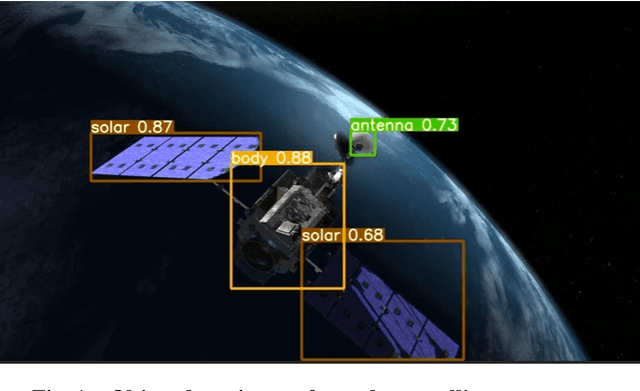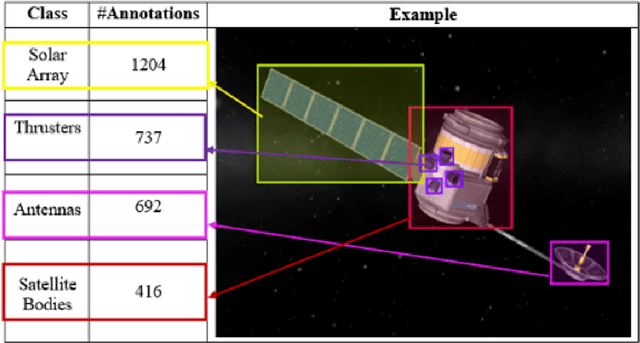Mackenzie J. Meni
Taking a PEEK into YOLOv5 for Satellite Component Recognition via Entropy-based Visual Explanations
Nov 03, 2023



Abstract:The escalating risk of collisions and the accumulation of space debris in Low Earth Orbit (LEO) has reached critical concern due to the ever increasing number of spacecraft. Addressing this crisis, especially in dealing with non-cooperative and unidentified space debris, is of paramount importance. This paper contributes to efforts in enabling autonomous swarms of small chaser satellites for target geometry determination and safe flight trajectory planning for proximity operations in LEO. Our research explores on-orbit use of the You Only Look Once v5 (YOLOv5) object detection model trained to detect satellite components. While this model has shown promise, its inherent lack of interpretability hinders human understanding, a critical aspect of validating algorithms for use in safety-critical missions. To analyze the decision processes, we introduce Probabilistic Explanations for Entropic Knowledge extraction (PEEK), a method that utilizes information theoretic analysis of the latent representations within the hidden layers of the model. Through both synthetic in hardware-in-the-loop experiments, PEEK illuminates the decision-making processes of the model, helping identify its strengths, limitations and biases.
Entropy-based Guidance of Deep Neural Networks for Accelerated Convergence and Improved Performance
Aug 28, 2023



Abstract:Neural networks have dramatically increased our capacity to learn from large, high-dimensional datasets across innumerable disciplines. However, their decisions are not easily interpretable, their computational costs are high, and building and training them are uncertain processes. To add structure to these efforts, we derive new mathematical results to efficiently measure the changes in entropy as fully-connected and convolutional neural networks process data, and introduce entropy-based loss terms. Experiments in image compression and image classification on benchmark datasets demonstrate these losses guide neural networks to learn rich latent data representations in fewer dimensions, converge in fewer training epochs, and achieve better test metrics.
 Add to Chrome
Add to Chrome Add to Firefox
Add to Firefox Add to Edge
Add to Edge